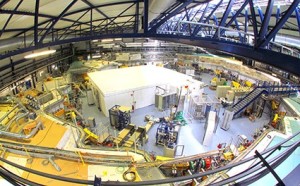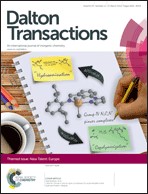Title of Research Group: Actinide group
Principal Investigator: Prof. Robert Baker
Institution: Trinity College Dublin
School: School of Chemistry
Research: My group are interested in exploring the chemistry of the early actinides from a fundamental and applied point of view. We are interested in how U, Np and Am change over the long timescales represented in repositories. This is one method of storing spent nuclear fuels (SNF) that has been recommended by the EU and the stalled US facility in Nevada. We have found that uranium minerals can have a role to play in retarding or accelerating the migration of the highly radioactive Np and Am ions. However there is very little research conducted on the chemistry of the uranyl minerals. For instance studtite, UO4.2H2O, is formed on the surface of SNF by radiolysis of water to form hydrogen peroxide that oxidises UO2. We have started an in depth study of these minerals and are using EXAFS and HR-XANES to probe the structural and electronic features of the minerals and the Np incorporated minerals.
Techniques: U L3 and M4 Edge EXAFS and HR-XANES; Np L3 EXAFS and M4 HR-XANES, Neutron scattering
Facilities: ANKA and INE laboratories, Karlsruhe Institute of Technology, Germany; Diamond; ISIS,
Beamlines: INE beamline at ANKA
Group (as of 2014): 3 Ph.D. and 1 PDRA
Participating group members at SR/FEL/neutron facilities (period 2008-2014): 1 Ph.D and 1 PI
Impact: There is currently few synchrotrons that allow neptunium compounds to be analysed, due to the high radioactivity. Therefore any results will have a large impact upon our understanding of Np in the environment and can aid in developing more realistic geochemical models for storage of SNF over 106 years. We acknowledge COST action CM1006 and TALISMAN for funding our work.
Access to the ANKA beamline has enabled my group to significant advances in the characterisation of uranium minerals from a chemistry perspective and enhance my students’ skillset to include something quite unique.
Publication Highlights:
- An EXAFS and HR-XANES Study of the Uranyl Peroxides [UO2(2-O2)(H2O)2].nH2O (n = 0,2) and Uranyl (Oxy)hydroxide [(UO2)4O(OH)6].6H2O. A. Walshe, T. Prußmann, T. Vitova and R. J. Baker, Dalton. Trans., 2014, 43, 4400-4407 DOI: 10.1039/c3dt52437j.
(Invited ‘New Talent: Europe’ themed issue)
Website: Baker Research Group



